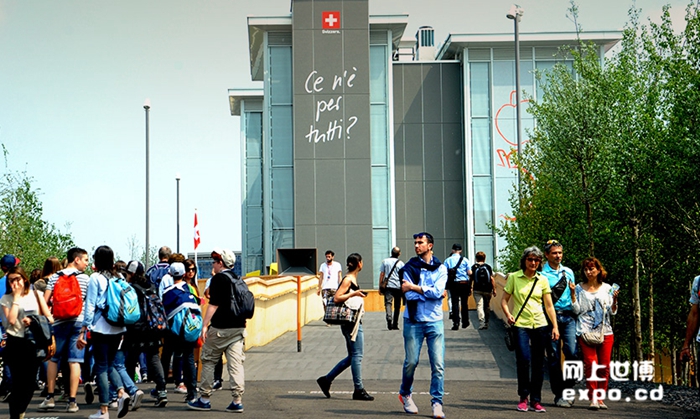The ground floor exhibits: a storehouse of discoveries
But the four towers are not the only good reason to visit the
Swiss Pavilion. The ground floor – where there’s no need to make a reservation – contains various fascinating installations.
The first is a space organized by the partner company
Nestlé through its research centers and in collaboration with the Italian Auxology Institute (dedicated to the study of physical growth). This focuses on the interaction between diet and mind. It starts with a room which represents the maternal womb: a very dimly lit space (the fetus develops sight only in the last part of gestation), where the mother’s heartbeat and breathing can be heard. From here the visitor passes into a room which explores the optimal balanced diet through an interactive game and explains how the human body evolves during the 1,000 days from conception onwards and how this is influenced by the mother’s diet. In the last room, the relationship between sight and taste is explored, and information can be interactively obtained concerning the most healthy lifestyles. The fundamental message of all this is that DNA is not alone in determining our lives, because our genetic features can be differently activated according to the adequacy of our diet.
The exhibition of the four cantons of the Saint-Gotthard Massif (Grisons, Uri, Ticino and Valais) bears the title “Water for Europe”, because this massif (known as “Europe’s Water Castle”) contains the sources of four great European rivers: the Reuss, the Rhine, the Rhone and the Ticino. At the center of the space is a huge marble monolithic model from which water flows away through channels in the floor representing the great rivers. The walls are covered with panoramic photos of the Swiss valleys.
The Pavilion is completed by a section on the cities (Zurich, Basel and Geneva). This space usually focuses on different cities at different times, but between August 7 and September 12, as an exception, all three will join in the Urban Food Innovations exhibition, which presents a sustainable, cultured and urban portrait of Switzerland, focusing on innovation, especially in the sectors of food sciences, sustainable use of resources and food production.
A taste of the Alps
Switzerland’s gastronomic heritage is expressed through two options: the Swiss Terrace, a gourmet restaurant with a fine selection of Swiss wines, and Street Food, which offers the classic Raclette on wooden tables in the open air (sheltered from the rain). The Swiss Pavilion does not forget about younger visitors: it offers them a playspace and a chocolate workshop space (to be booked half an hour in advance).

